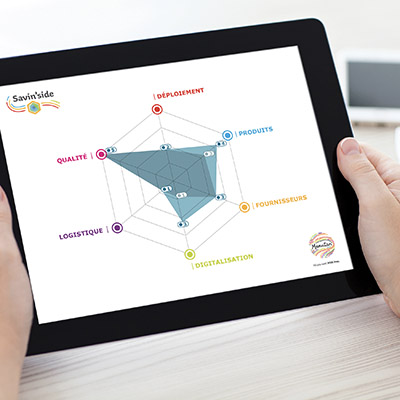In today’s world, technological innovations continually push boundaries, leading to more efficient products and services. However, this often coincides with increased consumption, a behavioural or systemic response known as the “Jevons paradox,” or more commonly, the rebound effect. This phenomenon is now widespread, even threatening our individual, collective, and policy-driven efforts towards ecological, energy, and circular transitions. It is essential to understand its nuances to effectively counter its impact and help inform energy policy strategies that consider these dynamics.
What is the rebound effect?
The rebound effect describes a rise in consumption that occurs when previously imposed limits on a product, service, or technology are reduced. The savings anticipated are ultimately cancelled out by overconsumption of the product in question or of other goods, as efficiency often encourages broader use and market expansion.
This concept was first documented in the 19th century by economist William Stanley Jevons, who noted that technological innovations that made steam engines more efficient did not reduce coal consumption as expected, quite the opposite. Instead, the financial and energy savings led to a broader adoption, thus increasing coal exploitation.
When applied to environmental matters, the rebound effect appears paradoxical, even counterproductive. Technical improvements lead to increased consumption and production, offsetting the anticipated environmental benefits. Ecological economist Louis Daumas highlights this dilemma: “We would risk, by improving the energy efficiency of machines, vehicles, or buildings, or by reducing the resource content in production, ending up consuming more energy and materials, and emitting more greenhouse gases. If proven, this would make the transition even more challenging, perhaps even unachievable.”
Each technological revolution encounters this rebound effect, manifesting across industries such as energy, agriculture, construction, and automotive. Examples include energy-efficient heating, fuel-saving vehicles, low-consumption lighting, and, more recently, remote work and the circular economy.
Types of rebound effects
Experts distinguish four primary types of rebound effects: Direct and indirect effects observed at the economic agent level, and market and growth effects at the broader economic level.
Direct rebound effect
This occurs when improvements in the energy efficiency of a product result in greater consumption of that product and, subsequently, its energy input. For instance, a fuel-efficient car may encourage drivers to travel more frequently because of the lower cost per journey.
Indirect rebound effect
Here, economic gains from a product’s improved energy efficiency allow the purchase of other goods, which consume energy and generate pollution in their production. This happens, for example, when savings from an energy-efficient car enable its owner to buy a plane ticket.
Market effect
This effect mirrors the direct rebound but on a larger scale. Here, a decrease in total energy and resource demand leads to price drops, making some activities more attractive, thereby increasing demand. For example, rail freight may be replaced by road freight if fuel consumption per kilometre decreases.
Growth effect
This category suggests that all improvements in energy or material efficiency can stimulate economic growth, investment, and consequently, large-scale energy use and resource consumption. Today, the digital sector faces this phenomenon.
Addressing the rebound effect
Despite its significant environmental impact, the rebound effect remains little known. Fabrice Bonnifet, President of the College of Sustainable Development Directors (C3D), reminds us, “All commitments to carbon neutrality or energy intensity reduction made by businesses or states will be of no value, nor will have any effect on preserving the planet, until the concept of the rebound effect is understood and accounted for.” Few solutions currently exist to mitigate the negative impact of these rebound effects. Companies can take steps to control this phenomenon by educating their teams and implementing measures.
Educating employees
In the rebound effect, consumer behaviours and cognitive biases tend to negate part of collective efforts. Thus, addressing the human factor is crucial. This inevitably involves raising employee awareness, a common practice in corporate energy strategies.
Let’s emphasise here the importance of energy-saving plans that focus on reducing energy consumption at its source through eco-friendly actions. This approach suits basic procurement, where many employees are authorised to place orders. Ultimately, this should foster a corporate culture committed to sustainable consumption, embodied by all.
Measuring the rebound effect
As the saying goes, “You can only manage what you measure.” However, the rebound effect remains challenging to identify and quantify. Some experts have explored this, comparing different scenarios using assessment methods like life-cycle analysis (LCA) or material flow analysis (MFA), econometric models, elasticity parameter estimation, or hybrid approaches. Most of these focus on measuring greenhouse gas emissions and/or energy consumption.
Although difficult to apply systematically in business, this approach sparks strategic project discussions. With reliable data, organisations, in collaboration with procurement departments, can implement tailored mitigation strategies.
The rebound effect is a subtle, paradoxical, and challenging phenomenon to grasp. Businesses must consider it an essential variable within their resource management strategies, particularly as climate change intensifies the demand for efficient and sustainable practices.









